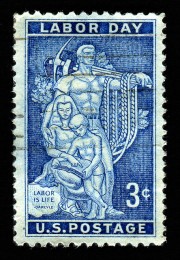The $20M One-Cent Stamp

On The New Yorker’s Currency blog, Daniel Akst tells the tale of one very old, very valuable stamp:
The 1856 British Guiana one-cent magenta doesn’t look like much. It is a ruddy, squarish, indistinct stamp, its corners chamfered haphazardly. But appearances can be deceiving: Sotheby’s expects to sell it at auction in June for between ten and twenty million dollars. That would make it the most expensive stamp in the world.
1. “chamfered”
2. That is one expensive stamp.
There is a lot of fun (yes, fun) history here:
As Sotheby’s tells it, in the mid-nineteenth century, the colonial postal system of British Guiana, in South America, relied on stamps imported from England. In 1856, though, a delayed shipment prompted the Guianan postmaster to seek a local supplier. The Royal Gazette newspaper, using a hand press capable of printing just two stamps at a time, was commissioned to produce stamps known as the four-cent blue, the four-cent magenta, and the one-cent magenta. Four cents was the price of a letter; one-cent stamps were used on the wrapping of newspapers, like the Royal Gazette itself. The stamps were so crude that the postmaster initialled each one, to certify that it wasn’t a fake.
This stamp has been passed around between museums and nations and rich people for a very long time. It’s been featured in a Donald Duck short. Stamp-collecting ain’t what it used to be, but rich people are richer than ever:
David Redden, the celebrated Sotheby’s auctioneer and vice-chairman, who will conduct the sale, told me that the prices of trophy properties of all kinds, ranging from a Stradivarius viola to a 1933 double eagle twenty-dollar gold piece, have been soaring, in keeping with the incomes of the supremely wealthy individuals likely to covet them.
Photo: karenhorton
Support The Billfold
The Billfold continues to exist thanks to support from our readers. Help us continue to do our work by making a monthly pledge on Patreon or a one-time-only contribution through PayPal.
Comments